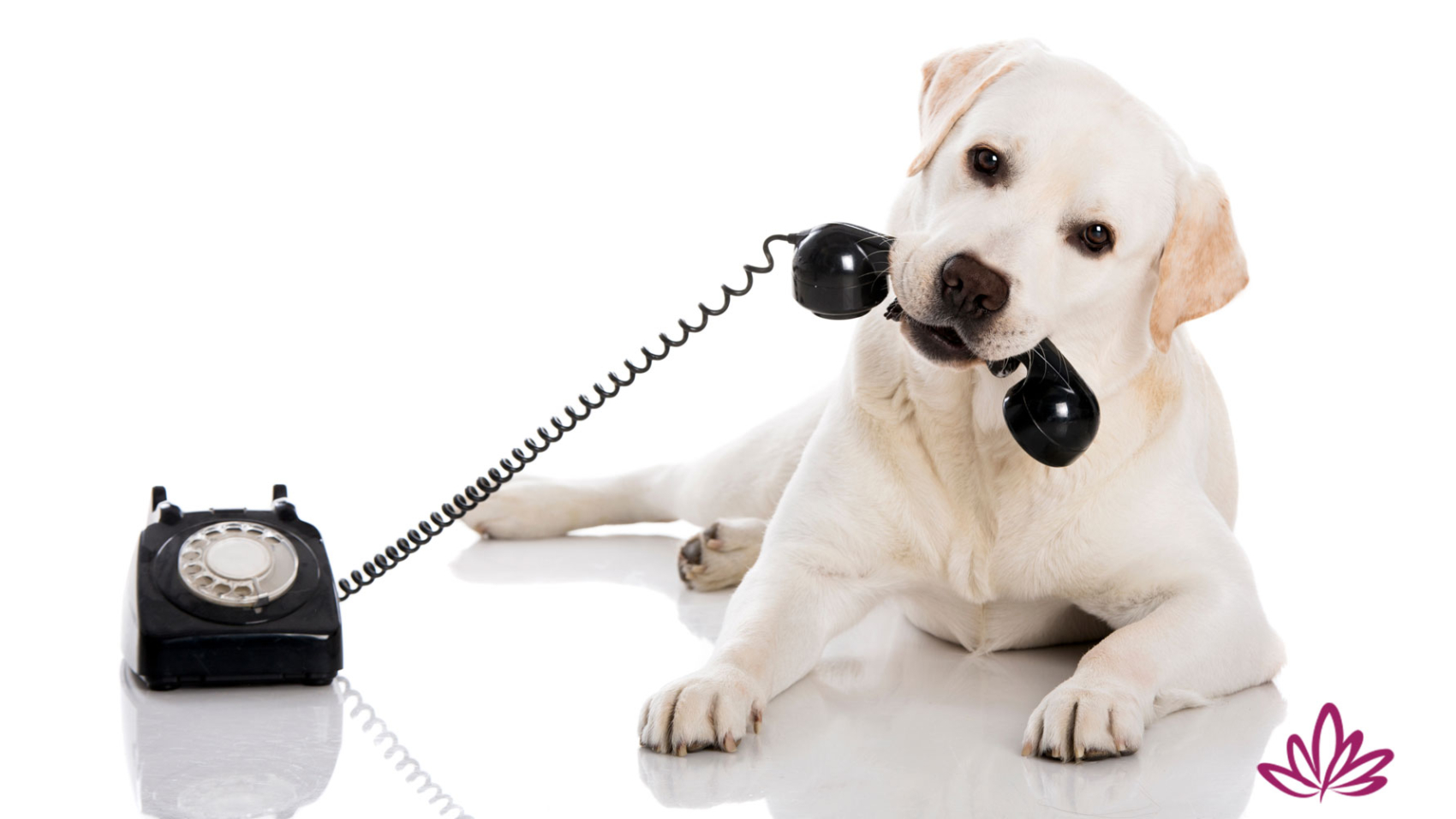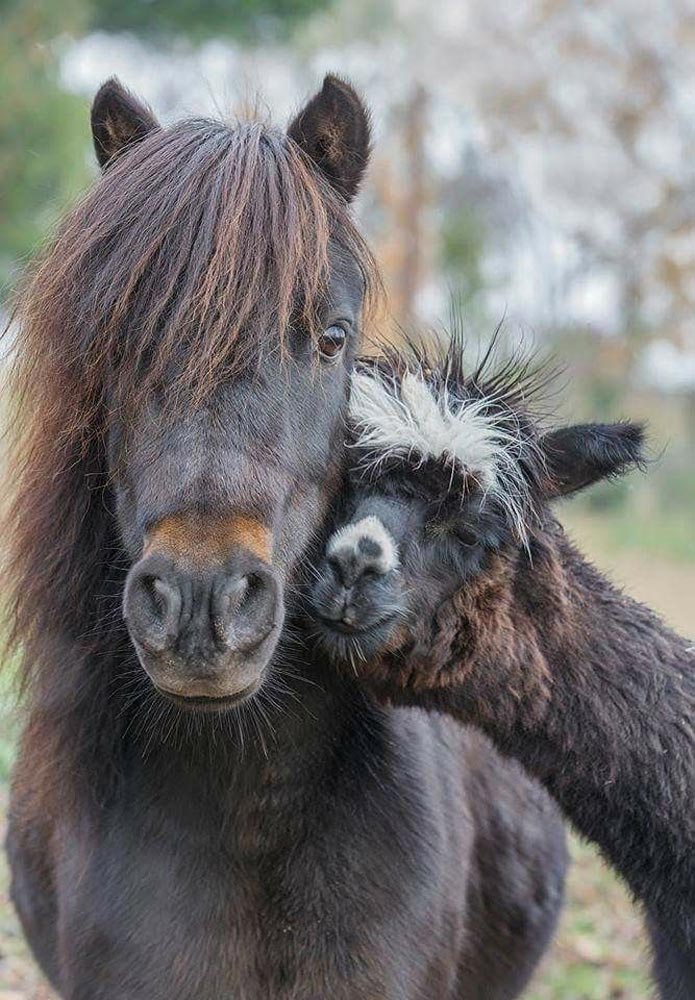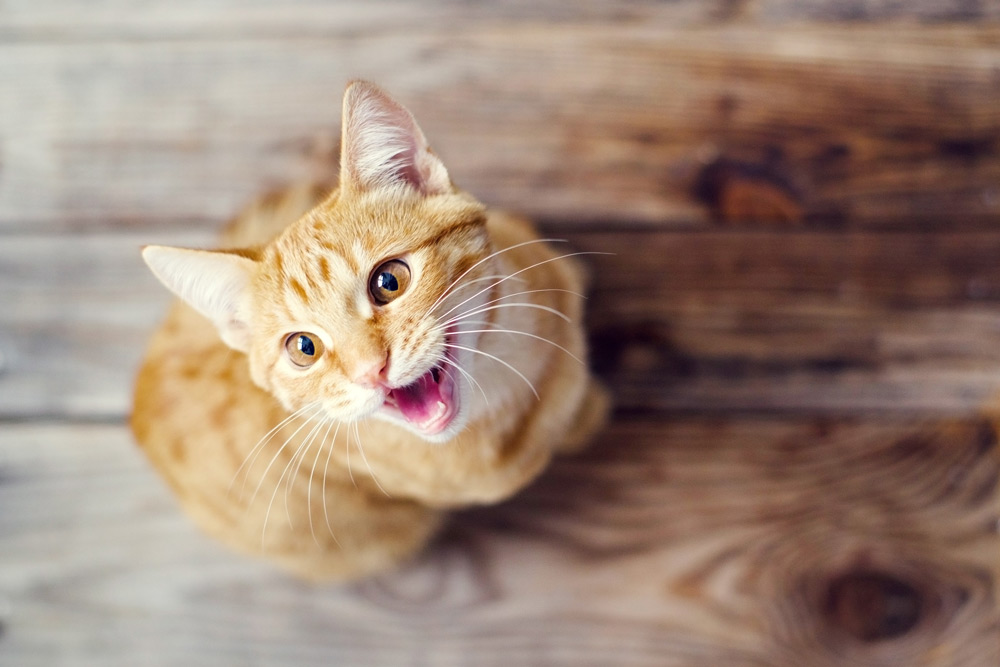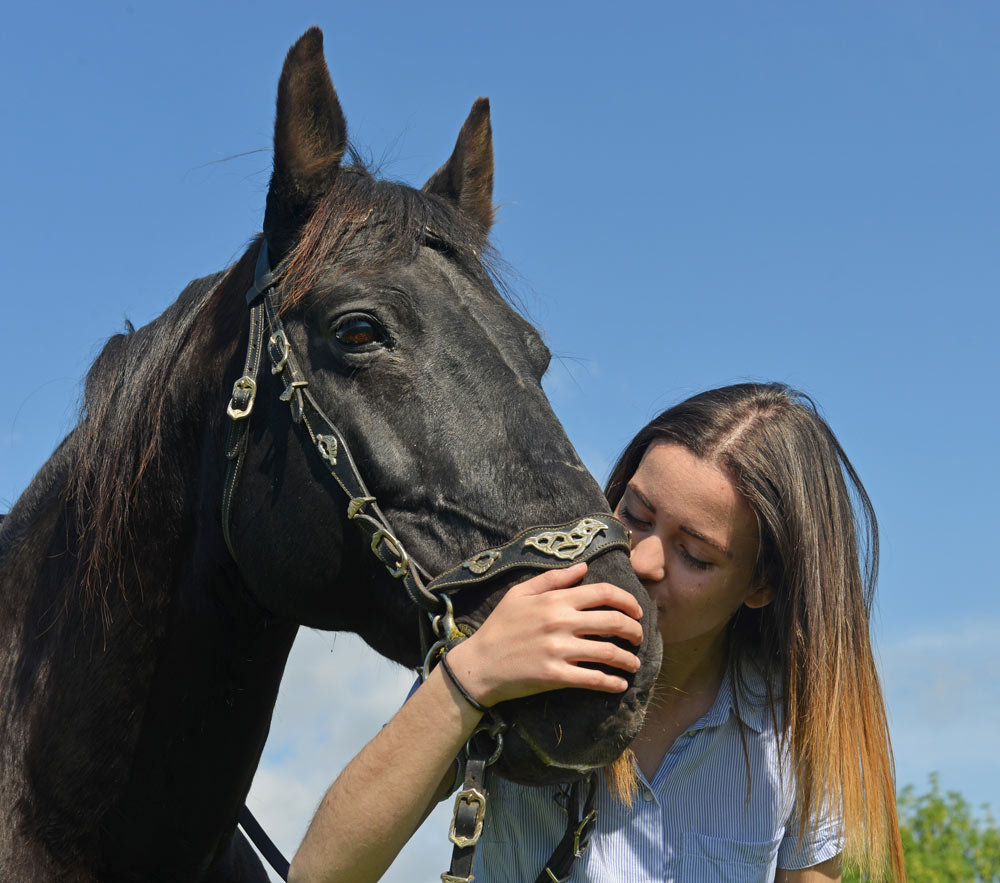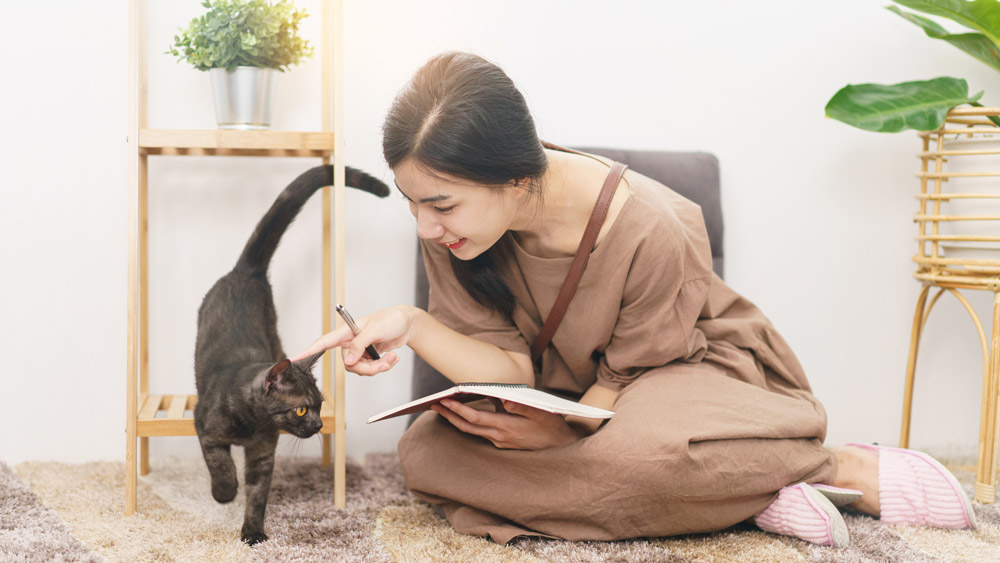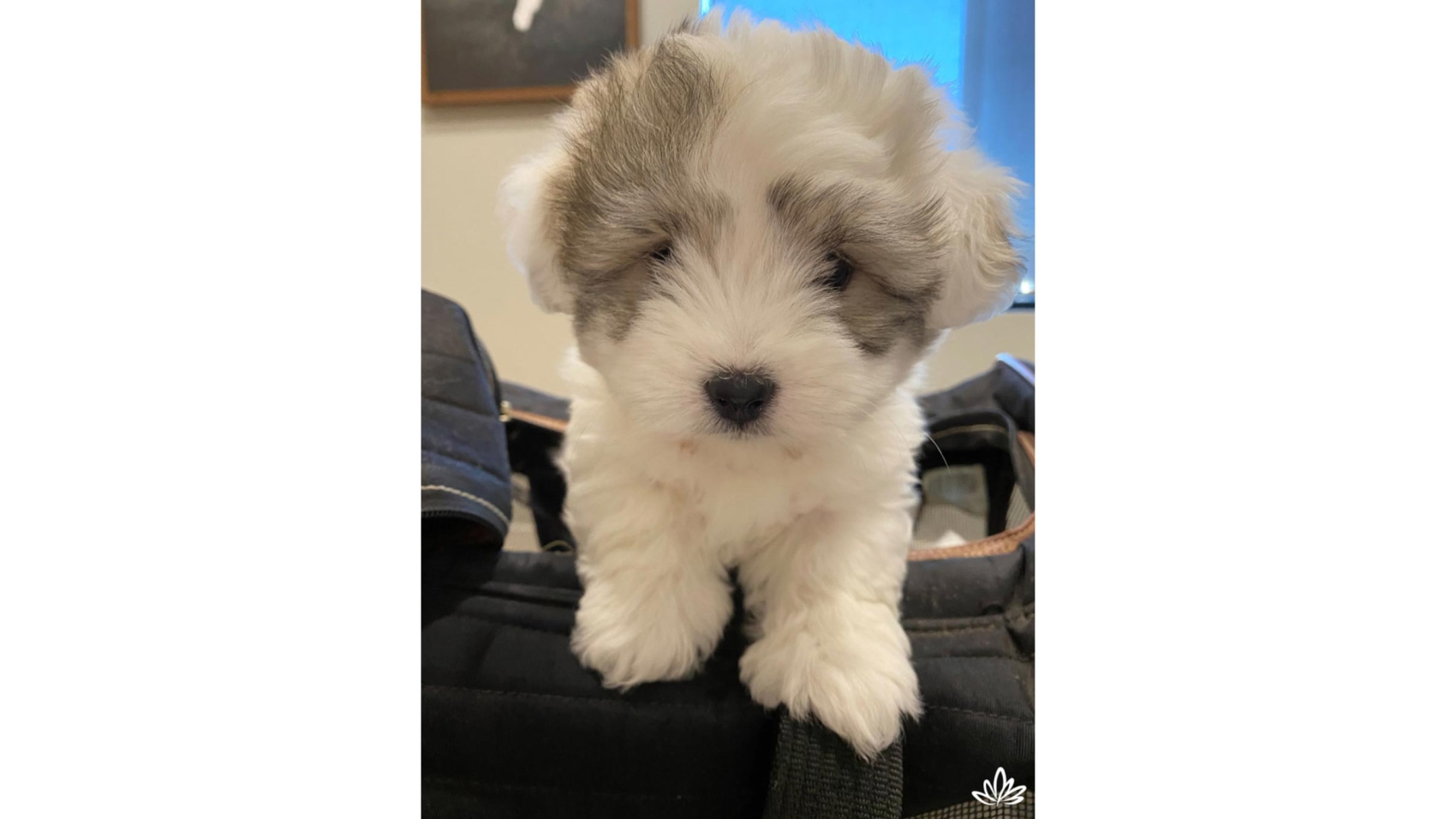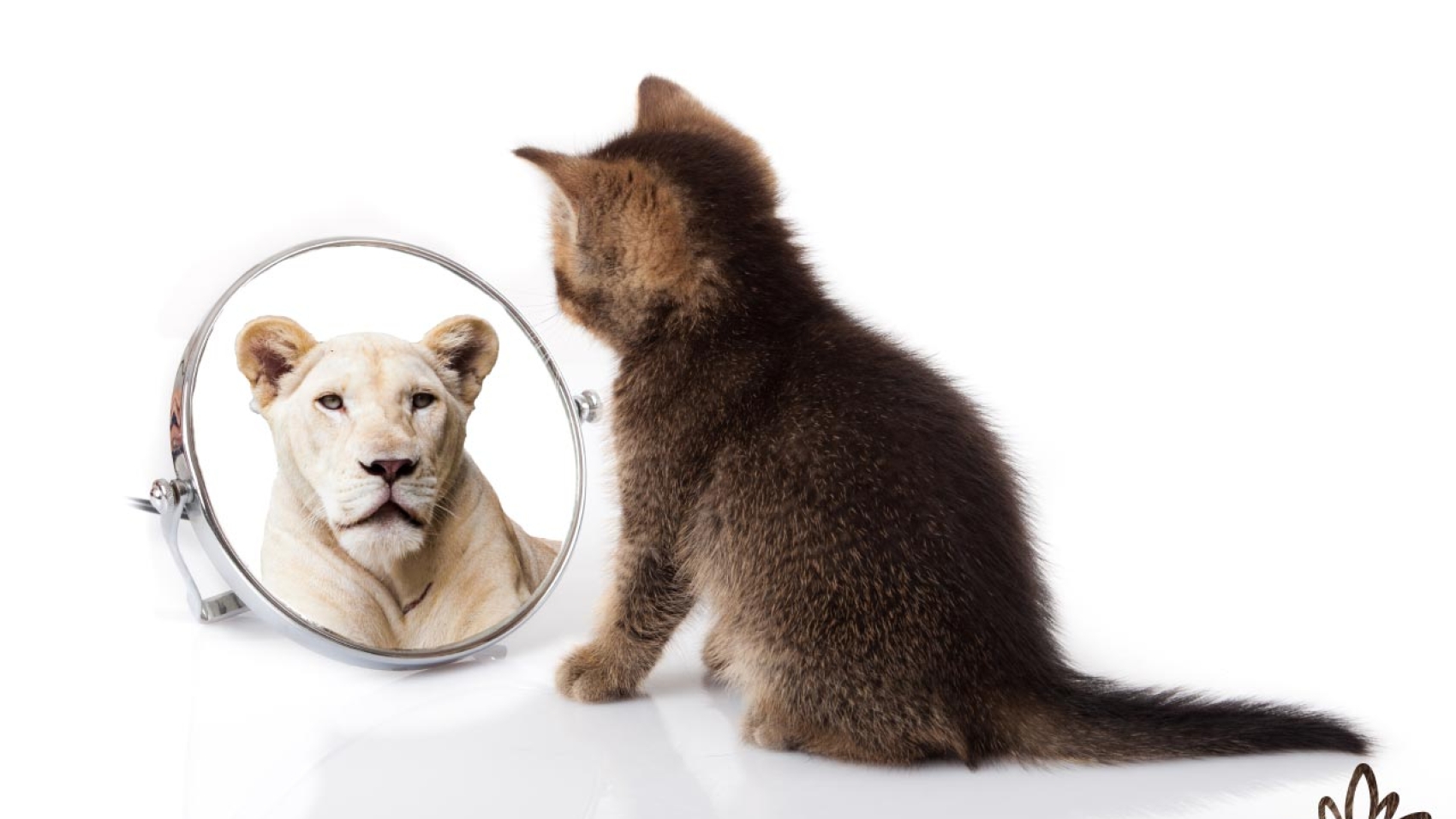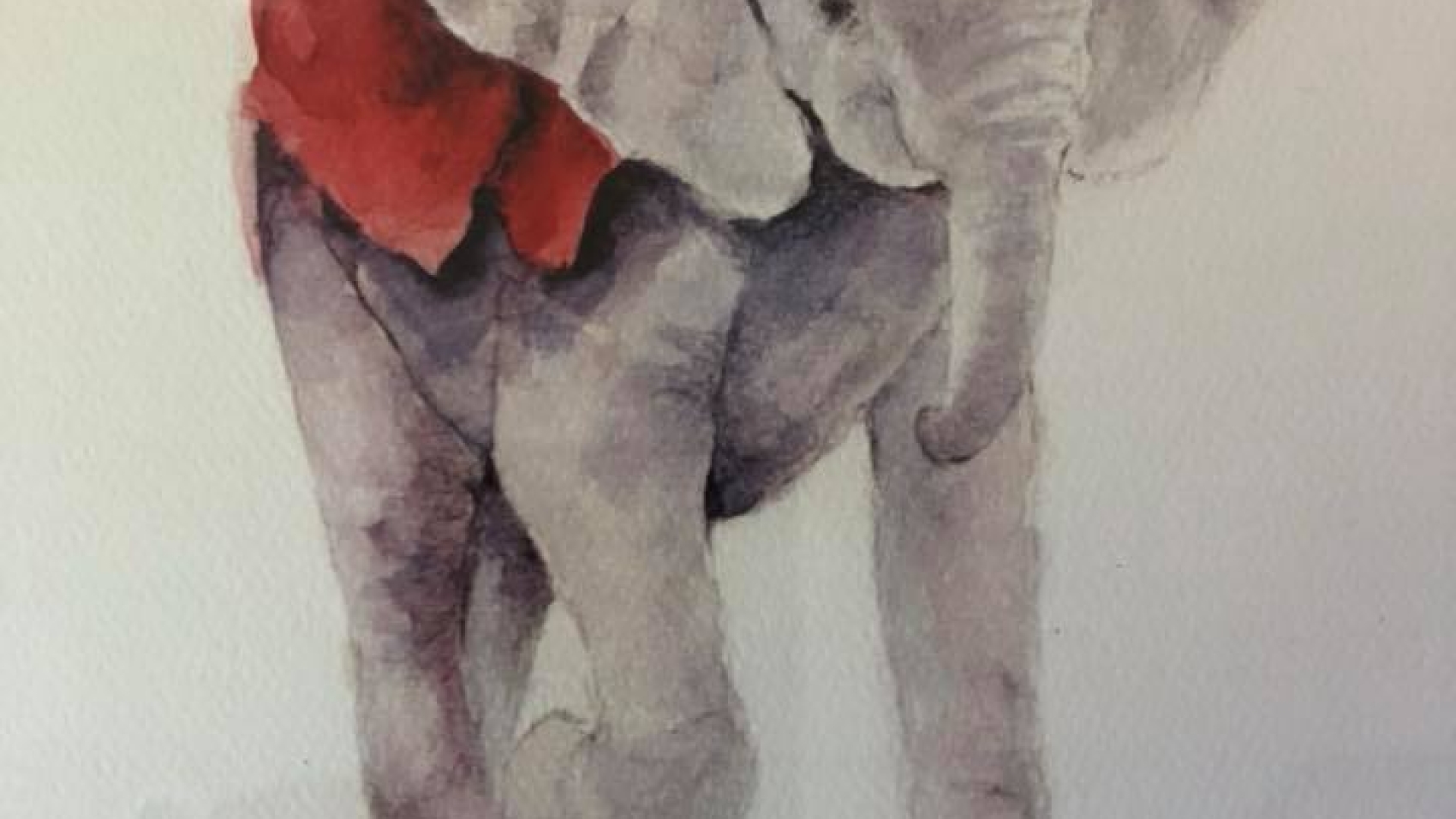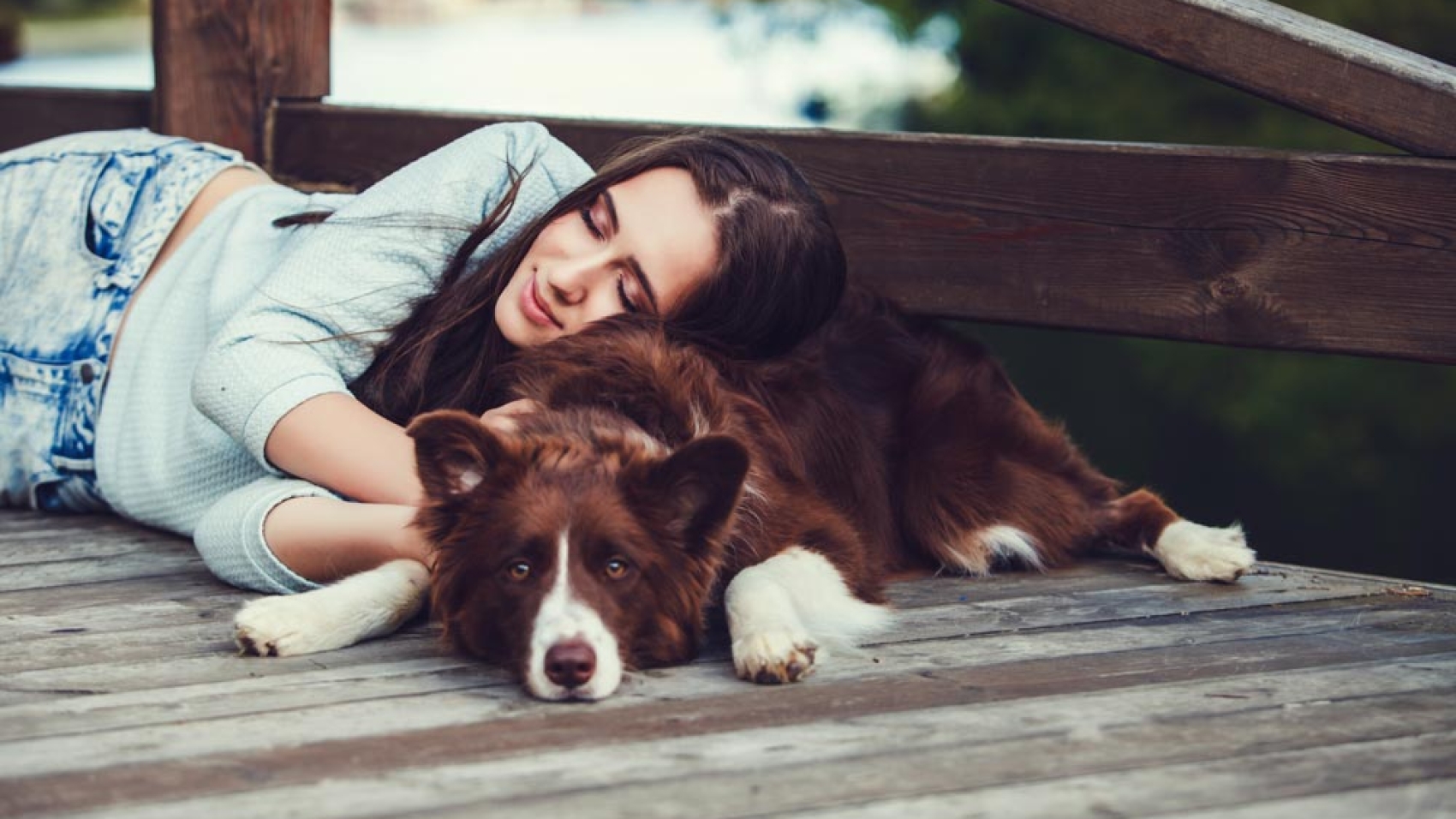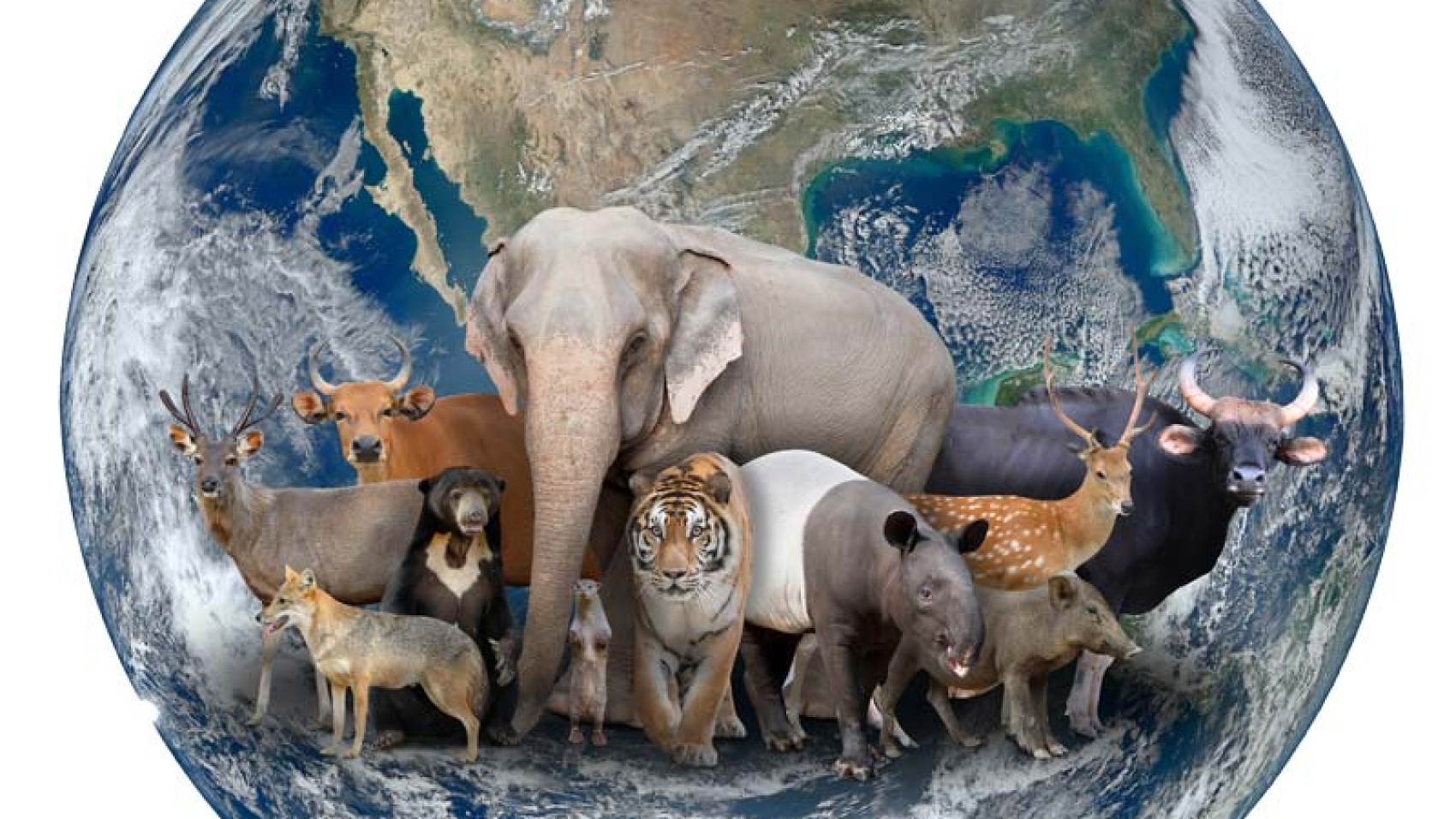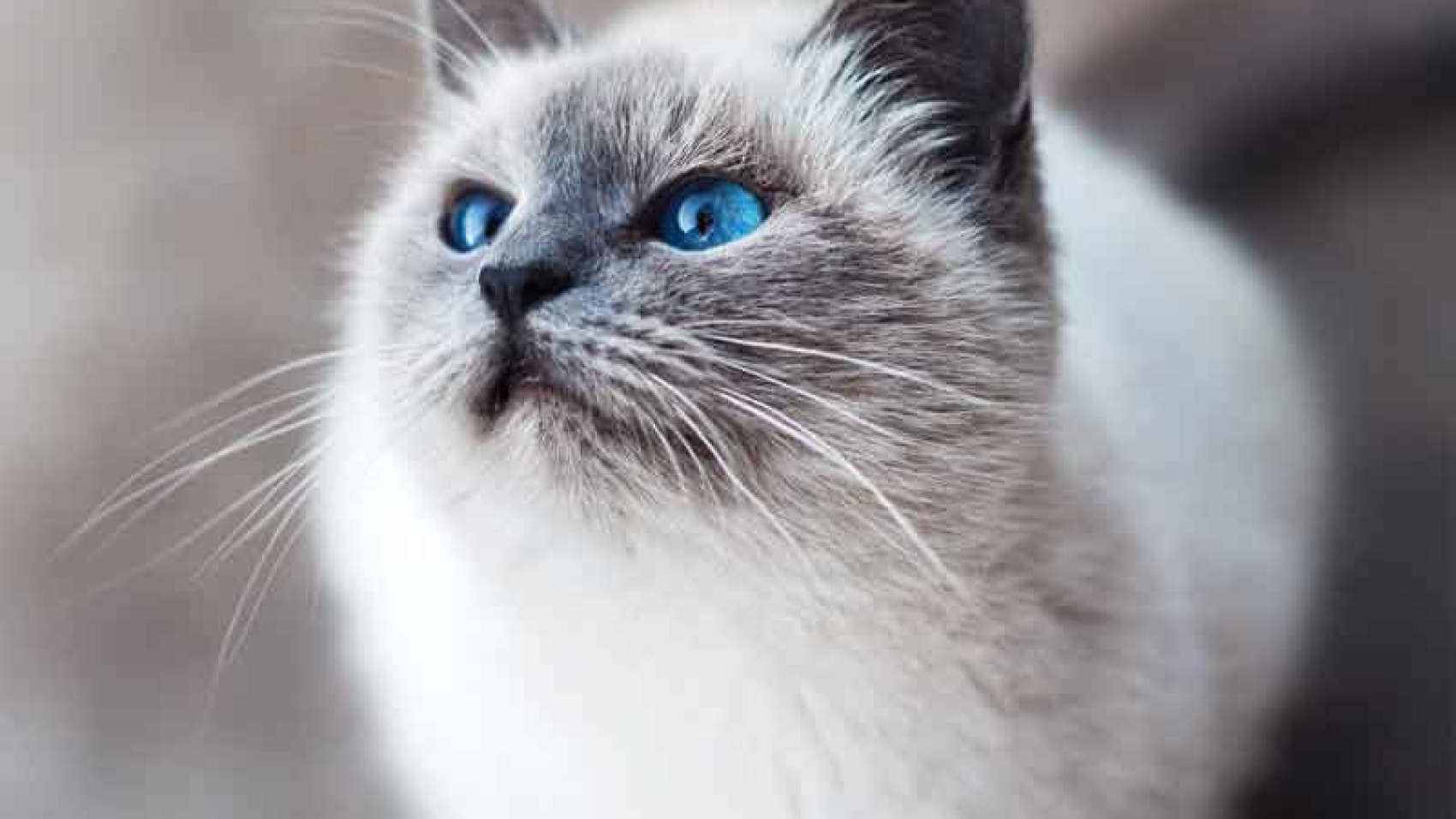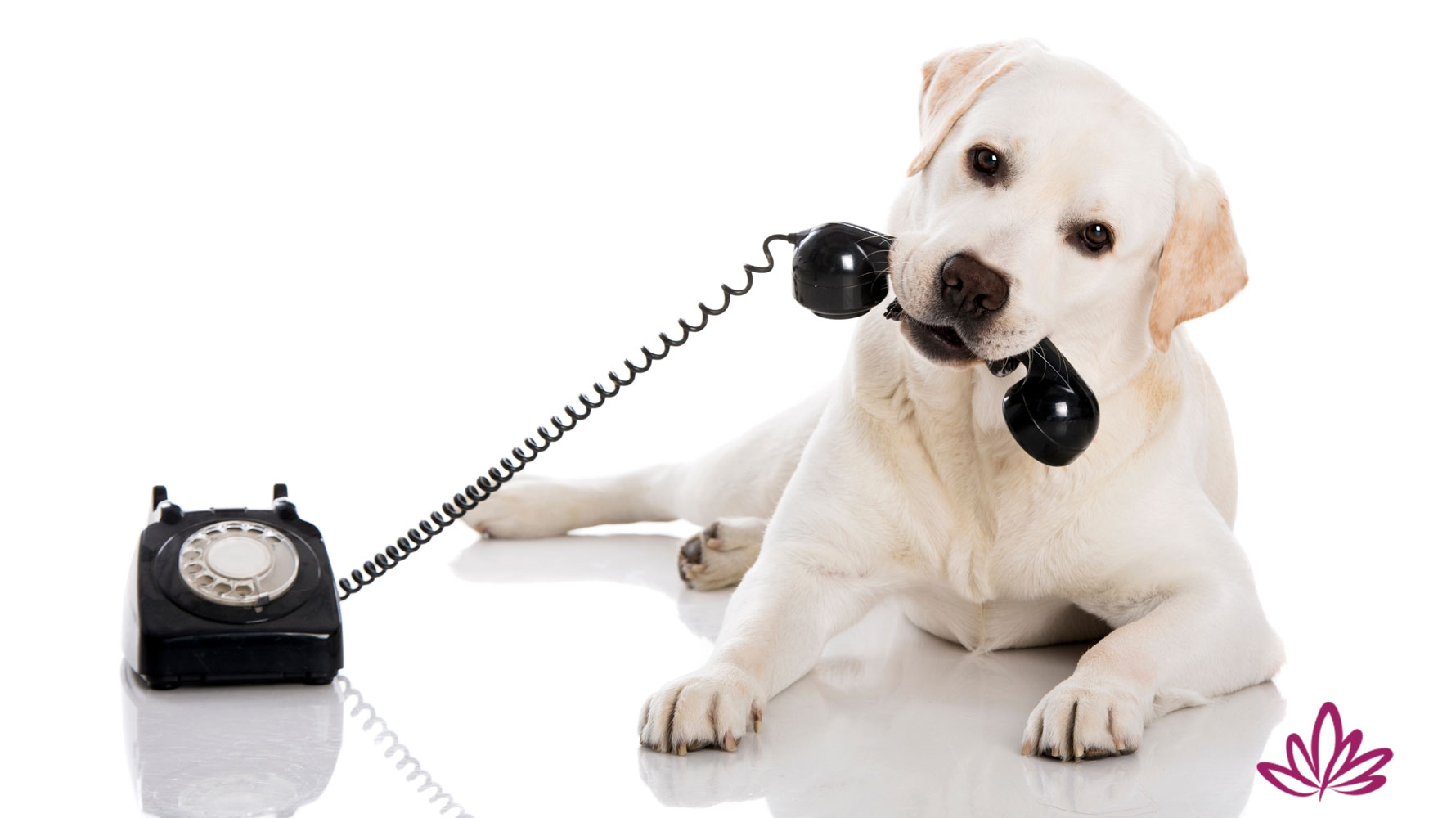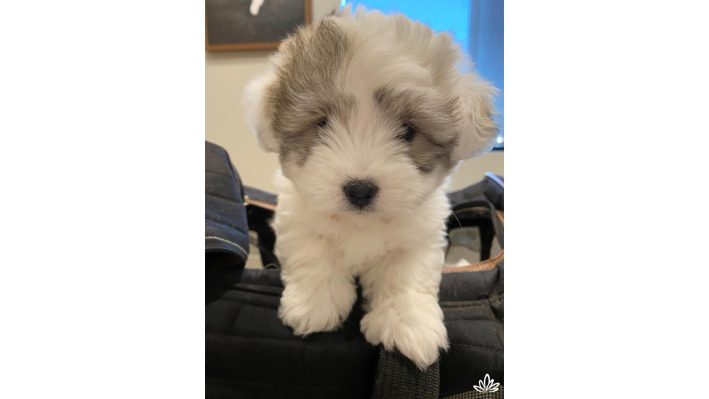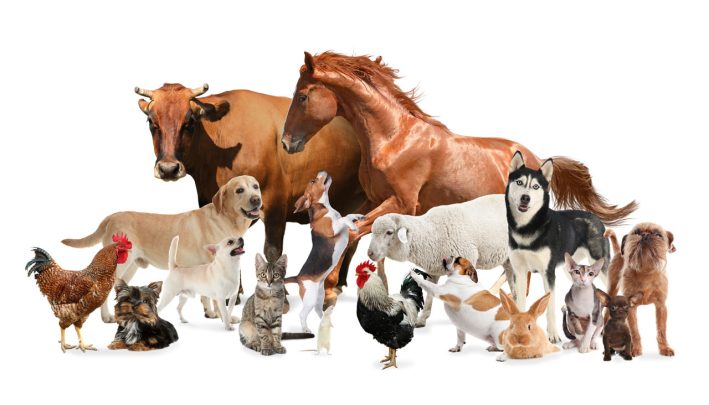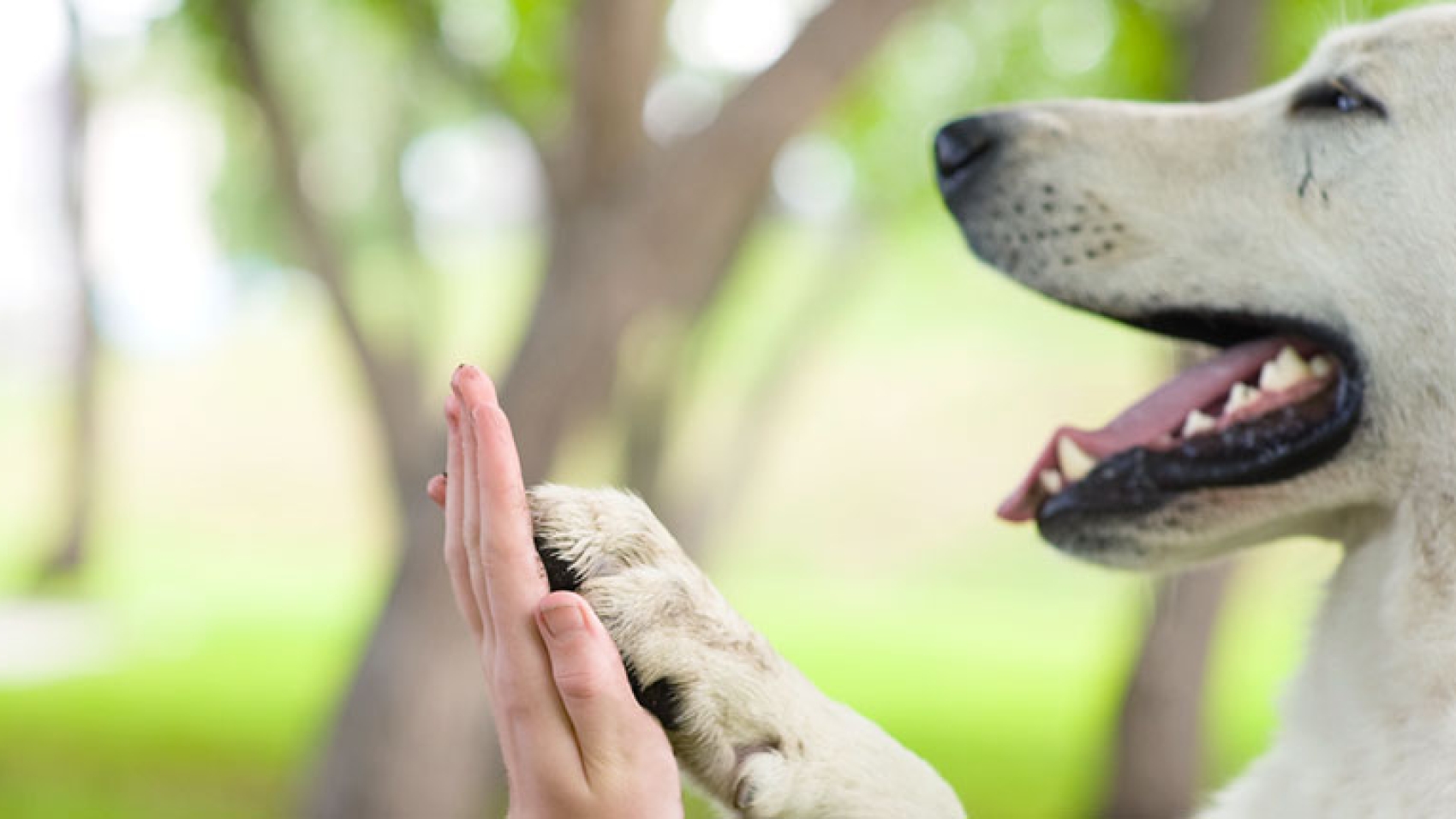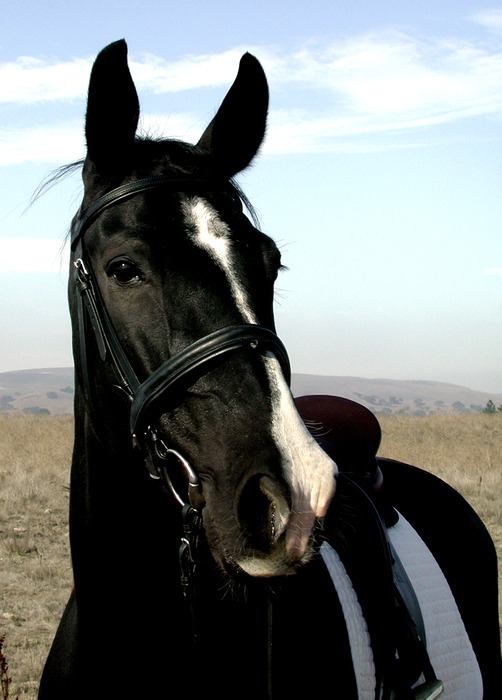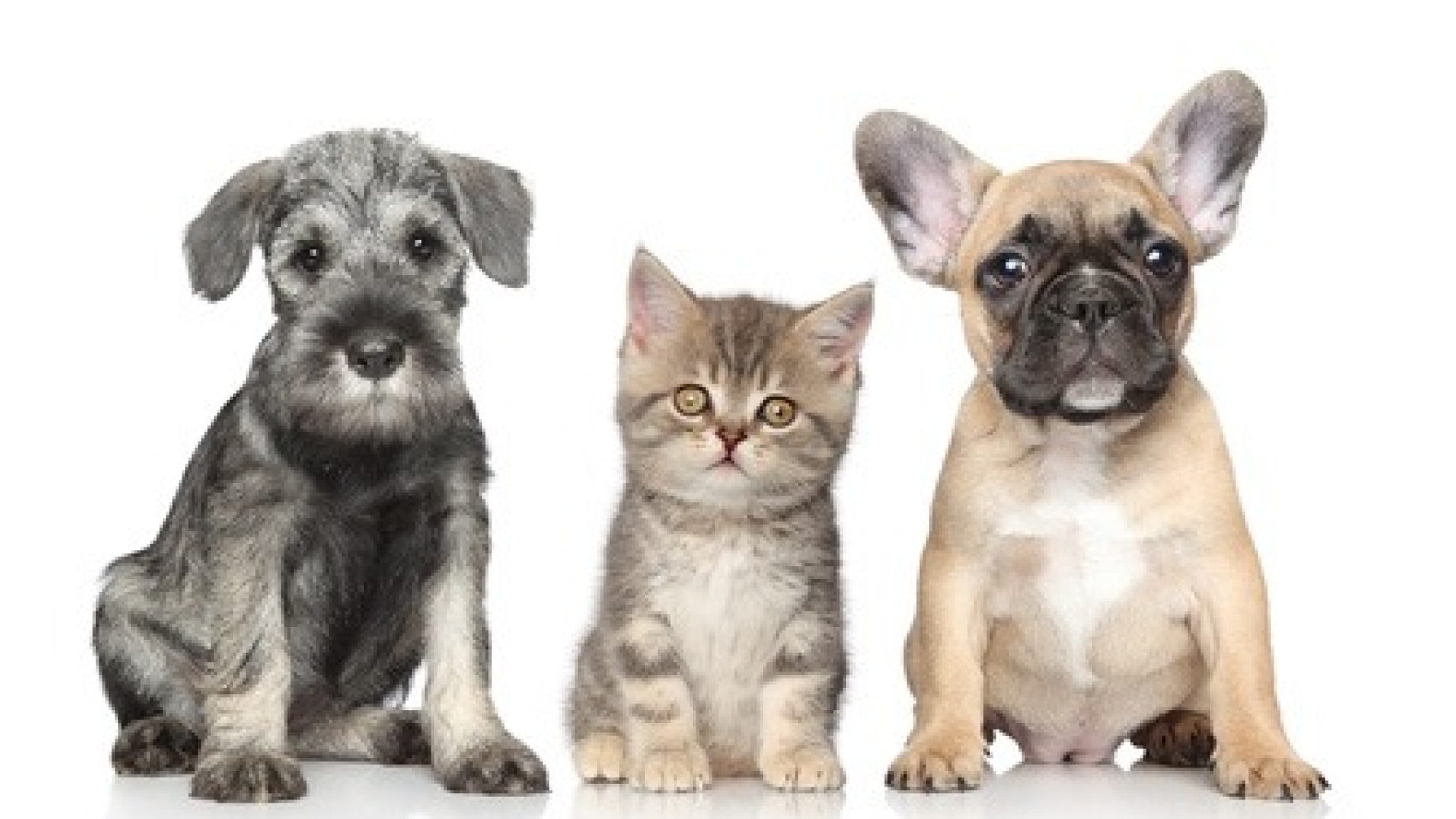Celebrating Pets! What we can learn from their intelligence, abilities, and healing powers.
Celebrating Pets! What we can learn from their intelligence, abilities, and healing powers.
Real World Animal Farm (Pigs Still Get The Best Of It)
Real World Animal Farm (Pigs Still Get The Best Of It)
The Royal Meow
A German Shepherd, a Doberman, and a cat have died. All three are face to face with God, who wants to know what they believe in.
The German shepherd says: “I believe in discipline, training, and loyalty to my master.”
“Good,” says God, “then sit down on my right side. Doberman, what do you believe in?”
The Doberman answers: “I believe in the love, care, and protection of my master.”
“Aha, “ said God, “you may sit to my left.” Then he looks at the cat and asks: “And what do you believe in?”
The cat answers: “I believe you’re sitting in my seat.”
And that is so accurate! It’s like the saying, “Dogs have masters; cats have slaves.” I know, I’ve been a slave to various felines in my life. If you have ever had the privilege of caring for a cat, you know what I mean.
Cats don’t listen to commands. Just try telling a cat to sit, or come, or speak. Instead of instant obedience, you’ll probably get a disdainful look, as befits the royal majesty. Yes, cats have an ancient royal lineage.
Ancient Egypt was famously devoted to cats. The deities Mafdet, Bastet, and Sekhmet all had the heads of cats. Bastet’s job was the protection of her country as well as of home and hearth; she also protected women’s secrets, guarded against evil spirits, and was, naturally, the goddess of cats. Sekhmet was a lion-headed goddess who had to be appeased or else she would wreak havoc (like those YouTube videos of a cat with a roll of toilet paper).
Since the First Dynasty of Egypt, cats—tamed African wildcats—protected the Pharaoh. Mafdet, a deity with the head of a leopard, was the protector of the Pharaoh’s chambers against not only snakes and scorpions, but also against evil. And then, of course, there’s the Sphinx, with a human head on top of the big cat body, guarding the sacred temples and pyramids. Over 200,000 cats have been found mummified in the tombs and “cat”acombs, with small bowls nearby for their milk in the afterlife.
One reason cats were protectors of the temples, besides getting rid of pesky rodents, was their ability to see beyond the physical plane. Cats, who can see in very low light, also sense what’s going on beyond the visible. I’ve seen my cat sit and stare at a spot in my home, checking out the spiritual presence in the room.
In ancient Japan, cats were charged with protecting Buddhist scriptures that were transported on ships from China, keeping mice and rats away from these sacred documents. This gave the Japanese a revered image of cats, which became the featured stars of folk tales in the 6th century. Today, cats and cat images are still aboard ships around the world.
In an ancient Chinese myth, in the beginning of the world the gods asked cats to oversee their new creation, and granted cats the ability to speak. The cats were more interested in playing and sleeping than with running the world. Eventually the cats said, why not put human beings in that position? So the power of speech was given to humans instead of cats, while cats were entrusted with keeping time. There is a belief in China that you can look into a cat’s eyes to tell the time of day. Today, cats have a well-developed love of routine. If your cat likes to have breakfast promptly at 7 in the morning and you oversleep, kitty will let you know in no uncertain terms that it’s time to wake up and feed me!
In 4th century India, the epic poem the Mahabharata had a cat named Lomasa that teamed up with a mouse to escape death, all the while discussing the philosophy of the balance of power in relationships. Despite their size compared to ours, it’s no question of who holds the power in the cat-human relationship!
Back in ancient Persia, Muhammad outlawed harming or killing cats. Muhammad clearly loved his own pretty kitty, Muezza, so when the call to prayer came, he cut the sleeve off his prayer robe, where the cat was napping, rather than wake her up. Another cat, which belonged to an ally of Muhammad’s, saved Muhammad from a snake attack. While petting the cat afterwards, he granted felines the ability to always land on their feet.
Although cats had high standing at first in ancient Europe, when the Christian Church tried to demonize all the important pagan symbols, they associated cats with evil. Pope Gregory IX denounced cats, especially black cats, as being in league with Satan, and they were regularly killed throughout Europe. This let the mice and rat populations explode, and the fleas from these rodents brought about the Bubonic Plague. It took until the reign of Queen Victoria in Great Britain, who adopted two Blue Persians and treated them like members of her court, that Europeans again started keeping cats.
As strange as it may seem, domestic cats didn’t arrive in the U.S. until 1749 CE, when they were brought on board ships from England to help control the rodent population. By 1895, cats had become so popular that the first cat show filled Madison Square Garden in New York.
Well, time to go feed my cat. She’s old and slow these days, but still communicates her desires with that inborn authority to command. And yes, she can sit and nap wherever her royal majesty desires.
If you want to learn more about cats, other pets, and wild animals check out my Communicating with Pets and Animals course.
A Baby Elephant – Just What I Always Wanted!
At a retreat last week, my advanced students presented me with the most amazing, loving, and life-affirming gift. On my behalf, they made a donation to the David Sheldrick Wildlife Trust in Kenya. I am now fostering an orphaned baby elephant! I received a certificate from the orphan rescue program and will be able to follow my foster child’s growth and development in an online diary. His name is “Maktao” and he is three months old. I’m so thrilled and I hope I will be able to go to Africa soon to bond with him!
The Work of the DSWT
Best known for their work to protect elephants, The David Sheldrick Wildlife Trust (DSWT) operates the most successful orphan elephant rescue and rehabilitation program in the world. They embrace all measures that complement the conservation, preservation and protection of wildlife including anti-poaching, safe guarding the natural environment, enhancing community awareness and providing veterinary assistance to animals in need. Born from one family’s passionate love for Kenya and its wilderness, the trust is one of the pioneering conservation organizations for wildlife and habitat protection in East Africa.
DSWT was founded in 1977 by Dr. Dame Daphne Sheldrick, to honor the memory of her late husband, famous naturalist and founding Warden of Tsavo East National Park, David Leslie William Sheldrick. For over 25 years Kenya-born Daphne Sheldrick lived and worked alongside David, during which time they raised and successfully rehabilitated many wild species. At the heart of the DSWT’s conservation activities today is the Orphans’ Project, which has achieved world-wide acclaim through its hugely successful elephant and rhino rescue and rehabilitation program.
Orphans Welcome Here
The Orphans’ Project exists to offer hope for the future of Kenya’s threatened elephant and rhino populations as they struggle against the threat of poaching for their ivory and horn, and the loss of habitat due to human population pressures and conflict, deforestation and drought. When a tiny new-born elephant like my charge is orphaned, it is often because its mother and family have been killed to serve the brutal ivory trade. For an elephant, family is all important; a calf’s very existence depends upon its mother’s milk for the first two years of life. An Elephant Nursery now exists nestled within Nairobi National Park under the auspices of the DSWT. The nursery offers hope for any orphaned elephant fortunate enough to be found alive. They rescue and hand-rear elephant and rhino orphans, along with many other species.
Daphne Sheldrick worked for nearly three decades of trial and error to perfect the milk formula and complex husbandry necessary to rear an orphaned infant African elephant. Today, with support from many caring people world-wide, the David Sheldrick Wildlife Trust is proud to have saved over 150 orphaned infant calves, which would otherwise have perished. More importantly, every one of these orphans can look forward to a quality of life in the wild, living free in Tsavo East National Park protected by their new extended orphaned family and friends among the wild herds.
Welcome, Maktao!
So my wonderful gift from my students of a chance to foster baby elephant orphan, Maktao, comes via The David Sheldrick Wildlife Trust’s digital foster program. This program allows individuals across the world to support the trust’s field projects by fostering an orphaned elephant, rhino or giraffe in their care. All elephant, rhino and giraffe orphans rescued by the trust are available to foster, including those orphans living back in the wild. The DSWT’s Elephant Orphanage is open to the public for one hour every day, from 11 am to noon. During this time the orphans arrive for their midday mud bath and feeding. Baby elephants love their mud baths!
Welcome, Maktao, to the sponsorship of a caring human family—all of us here at the Deborah King Center. The Trust likes to name its orphaned elephants in a way that can identify them with their origin. The orphans come from all corners of Kenya and from many different elephant populations, so they are usually given place or ethnic tribal names, as was Maktao, where he was found.
The most precious gift is the gift of life. Thank you, my beloved students, for giving me this gift of life!
Pet Power: The Amazing Ways Animals Help Us Heal
Pet Power: The Amazing Ways Animals Help Us Heal
It’s no secret that our animal friends, our beloved pets of every species, provide us with companionship, love, and an overall feeling of wellbeing. They help us feel good in so many ways that we accept their value without question. In fact, all the animals of the Earth are worthy of our concern and protection and, today, need our attention more than ever. Although we’ve always known how important animals are to us, our knowing has been personal and intuitive. Now a new era of research has begun to discover the hows and whys of our bond with the animal kingdom. We know about “pet power” from our personal experience, but now science is exploring the power of human-animal connections to document and strengthen those ties!
Paws for People 101
In 2015, Tufts University launched a new research wing, the Tufts Institute for Human-Animal Interaction to discover more about this important connection. The campus library was already “healing with the animals” in a program called Tufts Paws for People, bringing pets into the library during exam week to help students handle their stress and anxiety. Customer satisfaction ratings were high. Everybody loved it! Later, the university documented the positive stress-reduction results with hundreds of students participating in a survey about their stress levels before and after they spent time with the animals. When science documents the feel-good power, support grows for more research and development in this life-changing field.
What Can “Pet Power” Do?
According to the American Heart Association, pet ownership is linked to a reduction in cardiovascular disease risk factors, such as lower blood pressure, lower cholesterol levels, and reduction in obesity. Research has shown that interacting with animals can increase people’s level of the hormone oxytocin, the “hug hormone,” which brings feelings of happiness and trust. Being with pets also causes your body to release serotonin, dopamine, and prolactin, more feel-good hormones. Pet your dog or cat for a few minutes and your cortisol, a stress-related hormone, will dip. Interacting with pets helps us relax, and they are pretty happy chilling with us, too!
Pet ownership is often recommended for people suffering from depression, low self-esteem, and severe anxiety. Animals are role models for being present, enjoying simple pleasures, being active and awake to their surroundings. Taking your pet for a walk takes you out of your head and into the world, where they eagerly and joyfully demonstrate how to explore and appreciate the environment.
Pets Bring You to Life!
Dr. Marty Becker, known as “America’s Veterinarian,” has made his life’s mission advocating for the wellness benefits of the animal-human bond. “Pets bring you to life,” he says, citing the physical, social, and medical avenues of healing that pets provide. In his lifetime, he has seen the human-animal bond move from the realm of folk wisdom to the realm of scientific research. “We have to prove it is true,” he says. Science is now confirming that people who interact with pets enjoy better physical health, a stronger social connection, and a greater sense of joy and wellbeing.
And, the wellness feeling is definitely mutual. What Dr. Marty Becker calls the “love loop” between humans and pets can be measured. Adoption rates increase at shelters where volunteers visit the animals to play with them and help them develop their social skills. Pet owners with chronic pain report less need for medication than people who don’t have an animal presence at home. Counselors, therapists, and teachers are drawing on the healing power of pets in their work. From veterans with PTSD to children with autism, more people everywhere are “feeling the healing” with pets!
Want to Help?
You can contribute to animal welfare by supporting your local shelter and donating to animal protection organizations. But what if you have a pet you would like to train with for animal therapy work? Look for opportunities in your community to join visitation programs that teach people and their pets how to help and heal. It could be a wonderful learning experience for you and your animal companion!
If you love animals like I do, you’ll love my new course, Communicating with Pets and Animals.
Learning the 5 Cs from your pet
What Your Pet Can Do For You
We love our pets and they love us. Even if your animal darling is a fish called Wanda, the joys of having a friend from the animal kingdom are real and true. Pets are powerful! I have to smile at the growing number of quips about watching pet videos when the world becomes too much to bear. In homes and offices across the land, people are tuning in to the world of animals for sweet relief. The work is too hard, too much, too stifling? The boss is cranky? The people unkind? The news horrendous? Check out the latest kitten and puppy antics online to soothe your soul!
One friend of mine shares news of heart-rending current events, followed by heart-warming videos of her cats playing in their favorite cardboard boxes. Her message? No matter what troubles the world is suffering, the animals remind us of our essential consciousness. They remind us not to lose heart or forget that love rules our existence. Love does and will conquer all. We love our pets and they love us. And in this exchange, our animals give us an amazing array of gifts that help us grow in spirit and live up to our responsibilities as their human partners.
The spiritual gifts we receive from our contact with animals are immeasurable, but we can focus our attention on a few core values. Here are five of the gifts we enjoy from our pets each day:
1. Companionship – Who is always waiting for you to appear and ready to show affection and enthusiasm for your presence? Even Wanda may do pirouettes in her fish tank when you peer in to check on her wellbeing. Pets provide company in the world whether we are walking, talking, sleeping, watching TV, working, socializing, or eating. Dogs especially love to be present while we are eating and I’m ashamed to admit I had a cat named Ginger that I let sit in the middle of the kitchen table during dinner. Pets increase our connection to the world by bringing out the best in us and bringing us into social settings from a walk in the park to the pet supply store to the veterinary office. Here we focus our caring attention on our animals and take a healing break from our own concerns. Animals can help us build communication skills in our efforts to understand and be understood. They can draw strangers to us to share our mutual love for the animal kingdom.
2. Comfort –We all need unconditional love, and sometimes we need a role model to remind us how love feels. The physical touch you experience with your pet can heal and soothe. Petting your dog or cat or horse or rabbit can help you feel less stressed, more at peace. Employees from one company I know make regular visits to a nearby animal shelter to play with the pets who are waiting there for permanent homes. The visitors report receiving as much comfort and joy from petting the animals as the pets so obviously do. Volunteers are always welcome at shelters to comfort the animals and expand their own hearts. Pets find homes more easily when they have opportunities to give and receive love. Researchers at the University of Missouri-Columbia found that petting a dog can spark production of two calming hormones that help you feel more relaxed. The unconditional love we receive from our animals helps build a self-esteem and self-acceptance that enables us to bring our better angels forth in everything we do. Loving family support heals us, even if we are talking “animal family.”
3. Courage – Animals are brave in defense of their loved ones, their homes, and one another. What is your favorite classic story of pet loyalty, unconditional love, courage, and steadfastness? From Black Beauty to The Incredible Journey, animal strength and courage lie at the heart of many of our most beloved tales. Today, you’ll find hundreds of true accounts of animal valor online—animals who have saved lives from war zones to their own backyards. Our animals remind us of what we wish to be: unselfish, loyal, joyful in simplicity, present in the moment, unworried, courageous, and unconditionally loving. We need role models for living, for keeping on under all circumstances, for fortitude. Our pets keep us grounded and focused on the things that really matter.
4. Caretaking – Animals teach us the important spiritual lesson of taking care. Although we are mostly providing the food and shelter, our pets are giving us the opportunity to do so. They don’t supply a share of the rent or provide any financial support, but in caring for them, we grow in empathy and responsibility. The fact is that we are our brothers’ (and sisters’) keepers in this world. We are stewards of the Earth and protectors of the animals. It is a role we are called to honor and we grow in spirit when we carry out our duties faithfully. Taking care of pets expands our powers of nurturing and giving and builds empathy. The ability to recognize the needs of other living creatures and to see the connections between us all helps create an atmosphere of caring and compassion. Isn’t that just what the world need now?
5. Comedy – Lastly, I probably don’t need to remind you that we have fun with our pets, and fun is a spiritual gift, too! Never forget the healing and restorative value of laughter. Remember those pet videos? Our pets are natural comedians who know how to delight us with their innocence and inquisitiveness and just plain cuteness. Laughter heals us and returns us to a state of innocence. We experience present moment awareness –where our pets always dwell. They provide a special kind of happiness by encouraging us to love freely, live joyfully, and maybe even roll around on the grass or run through the sprinklers.
Thank you, animal kind, for all the blessings of your presence! If you’re seeking a deeper connection with pets and animals, checkout my course, Communicating with Pets and Animals.
Help Save the Elephants
“Elephants cannot be manufactured. Once they’re gone, they cannot be replaced.” – Dr. Iain Douglas-Hamilton, Founder of Save the Elephants
You probably don’t remember the first time you saw an elephant. Was it on a TV screen, in a book or a magazine, or maybe at the zoo? You may have been a child with a stuffed elephant on your toy shelf or a pair of elephant-patterned sleepers. This iconic animal has been a part of human consciousness for millennia—think about the ancient Hindu god Ganesh, for example. Always believed to be highly intelligent as well as mighty in strength, elephants are not mythical beings like unicorns or dragons. Elephants are real, and they need our help desperately if we are going to keep them with us on planet Earth.
And we do want to keep them! Elephants are gentle giants, largest of all land animals. They play an important role in maintaining the biodiversity of the ecosystems in which they live. Both African and Asian elephants form female-led, tight-knit groups consisting of a dominant matriarch and her female relations plus their calves. Living in groups makes individuals safer and allows them to devote more time to caring for and teaching the young. Research shows that elephants have amazing long-term memory and can recognize themselves in a mirror, showing self-awareness. They understand what other elephants are feeling and comfort one another. They also assist other injured elephants, and even mourn their dead.
What makes elephants special in addition to their intelligence and self-awareness? Their amazing anatomy! Here are some details from the International Elephant Foundation: The elephant trunk serves as a nose, a hand, an extra foot, a signaling device and a tool for gathering food, siphoning water, dusting, digging and much more. Elephants don’t drink with their trunks, but use them as “tools” to drink with. This is accomplished by filling the trunk with water and then using it as a hose to pour it into the elephant’s mouth. Elephants can swim – they use their trunk to breathe like a snorkel in deep water.
And then there are the elephants’ precious tusks. Most precious to them, and they should be allowed to keep them! Both male and female African elephants grow long tusks. Tusks are actually elongated upper teeth embedded deep in the elephant’s head with up to a third of the tusk hidden from view. They have a variety of uses: as a tool to dig for food or water and to strip bark from trees; as a weapon in battles with rivals; and as a courtship aid. The tusks of elephants grow throughout their life and can weigh over 200 pounds.
Each year tens of thousands of elephants are killed for their tusks. Although people do care about elephants being killed in Africa, they may not be aware of the full story and the implications for world peace. Because of the high value of wildlife trafficking, organized crime and terrorist organizations have a stake in the black market operation that brings in billions of dollars and funds civil wars in Africa as well as global terrorism. According to former Secretary of State Hillary Clinton, “Stopping poaching is no longer only about protecting the planet’s natural resources. It is also a national security issue, a public health issue and an economic security issue.” The Elephant Crisis Fund proposes using “the best ideas and actions from a diverse coalition of effective leaders, non-profit organizations, institutions, media, scientists, and governments.”In other words, it will take a village, a global village, to solve the elephant crisis.
Ironically, one of the most popular elephant stories of all time is Jean de Brunhoff’s children’s book The Story of Babar (1931) which begins with Babar the baby elephant being orphaned by hunters. Today, aid organizations are working to protect the animals from poachers while keeping their natural habitat intact—no easy matter. In fact, this crisis of existence for the elephant is a spiritual crisis for humans. While some humans are destroying, others are choosing to protect.
You may remember another classic children’s book, an elephant tale which portrays the heroic efforts of Dr. Seuss’s Horton to save an entire civilization. “I meant what I said, and I said what I meant. An elephant’s faithful 100 per cent!” are Horton’s words to all the naysayers who don’t think his mission is possible. Horton’s efforts defined his noble spirit, just like our human spirit must grow and be defined by our effort to defend and protect our planet’s most at-risk members.
For more information on elephants, check out my newest course.
Endangered Species: What it Means for Us
“Blessed are those who love animals, for they shall preserve the Earth.” I’m misquoting the Sermon on the Mount for a really good cause. Environmental protection looms large in our minds right now due to the extreme threat our planet faces from climate change and the missteps we humans continue to make. Whenever we think of protecting our planet, we also need to think of the other sentient beings who have something at stake. We are not alone. We live here with an incredible array of other life forms whose existence also hangs in the balance. And their welfare impacts ours in every way.
Our natural world is a complex interconnected system of human, animal, and plant life. We now know that the health and well-being of animal and plant populations reflect the quality of the environment we share. Think canary in the coal mine. We function with the millions of other living species on our planet as part of a finely balanced system. The loss of any single species can create a ripple effect that will eventually touch all of us.
The ecosystems of the earth function smoothly because of biodiversity—the full array of diverse life forms that populate our planet. Biodiversity, it turns out, is critical to ending poverty and promoting shared prosperity for the millions of people who depend on nature for their livelihood. When species disappear or fall in number, ecosystems and people suffer—especially the world’s poorest. We can’t know how valuable a species of animal or plant may be for us in the future. Everything is connected. When we protect endangered species, we also protect the ecosystems that permit us to live.
Naturalist and author Paul Rosolie writes about the urgent importance of preserving endangered species, “Wild animals keep our world alive. Without them, there is no us.” We don’t want to find out what the world would look like without our fellow creatures, and yet the problem of disappearing habitats and dwindling animal populations continues to grow. Just two months ago, the world’s last male northern white rhino, “Sudan,” died, leaving only two females left. Among other endangered animals are tigers and other big cats, elephants, gorillas, sea turtles, black rhinos, blue whales, and whooping cranes, to name the most widely known. There are many other endangered species within more localized habitats. Maybe you even know of some close to where you live.
“The appreciation of wildlife goes beyond merely what they have given us,” says Rosolie. “Wild animals have their own inherent value, their own reasons for existing. There are many species capable of making tools, sharing innovations, and having complex thoughts and emotions. They, like us, have families, endure struggles, feel pain, experience joy, and even play with one another.” I know you can testify to the truth of Rosolie’s words. Recently, I saw a heartbreaking photo of orphaned baby elephants wearing small blankets on their backs. Placed there by animal aid workers, the blankets were meant to simulate the feeling of their mother’s trunk draped over them for comfort and protection. These babies were not orphaned by Nature, they were orphaned by us.
We humans are now the dominant population on planet Earth with numbers greater than 7 billion. How have we been treating our fellow inhabitants? You may have heard the term “sixth extinction” coined by scientists as an expression of how rapidly species and ecosystems are vanishing under our watch. Humans of an earlier era did not have the scope of knowledge we have about our planet and its complex workings—and the delicate balance of life. With our increased awareness comes increased responsibility and the need to take action. We can work to reverse the ongoing damage. We don’t want to find out what it would mean for us if wildlife becomes extinct.
“Blessed are those who love animals, for they shall preserve the Earth!” What we love we protect. People around the world are working to help save endangered animals from extinction. Conservation organizations like the World Wildlife Fund, Defenders of Wildlife, Project AWARE Foundation, the Jane Goodall Institute and many others work to increase public awareness of the problems facing endangered animals, and by association, all living creatures. Opportunities to support the cause of animal welfare are global and local. You can help save creatures great and small, far and near—from the elephants in Africa to the local wildlife in that nature preserve your city is working to create. Every loving action counts. For more information on animals and what you can do to help save them, check out my newest course.
Raising an Energetically Healthy Pet
When you aim energy healing in the direction of your loving pets, much of that healing mojo will come right back to you. All you have to do is show a little love for an animal by merely petting it on the head and it will automatically produce a hormone in you that activates your nurturing abilities. And this is just the tip of the iceberg—innumerable studies are now being conducted on the powerful connection between owners and their pets.
You’d be amazed to learn at how much making a conscious effort to heal and connect with your pets will benefit you in return.


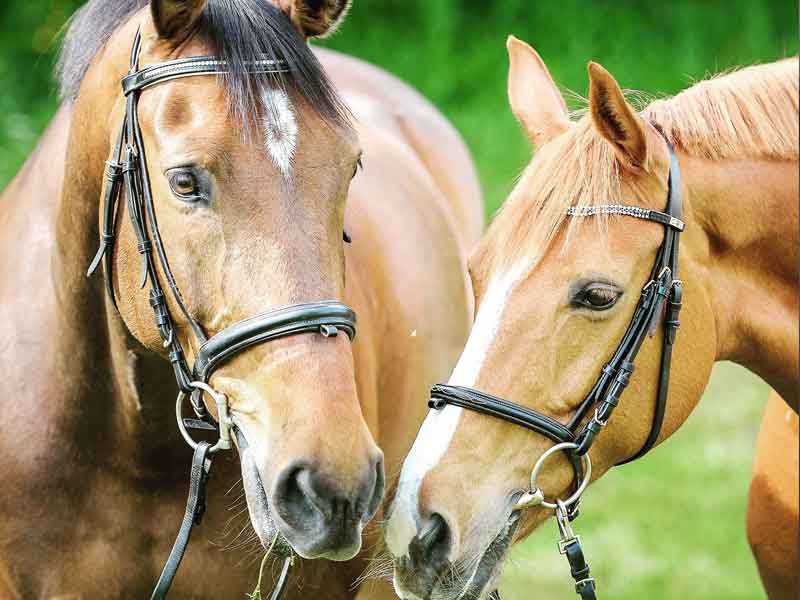
An example of how helping a pet can heal you: Elizabeth and Miracle Millie
A student of mine (who I’ll call Elizabeth) recently shared a story with me that demonstrates how animals and people can have powerful healing impacts on each other, both physically and emotionally. A few years ago, Elizabeth’s’ world was turned upside down when she suddenly lost her job. In addition to the devastating blow to her confidence and self-esteem, Elizabeth immediately lost her health insurance and was unable to continue working with the therapist who had been treating her for the debilitating anxiety and depression she had struggled with since childhood.
It didn’t take Elizabeth long to retreat to the dark places of her mind: she was spending days in bed, ignoring texts from concerned friends, and phone calls from family asking her to come visit so she could rest and reset in a safe environment.
One week after Elizabeth’s life shattered, she was scrolling mindlessly through Facebook on her phone from bed. Suddenly, she stopped at a post from an animal rescue organization about a disabled dachshund in need of a foster home. The rescue called her “Miracle Millie” because they didn’t think she would survive the night; a staff member at Animal Care and Control had found Millie in a cardboard box outside of the employee entrance to the shelter. In addition to surviving the severe August heat, the on-duty vet recognized symptoms that pointed to poisoning. Upon further evaluating Millie, the doctor realized that she had “gone down” and likely had IVDD (a common—but devastating and lifelong—back disease in dachshunds). We’ll never know the exact events that took place to Millie arriving at Animal Care and Control, but most likely whoever had Millie before she arrived at the shelter didn’t want to deal with a dog that couldn’t use their back legs, so they poisoned her. When Millie didn’t die, they left her outside the shelter.
By the grace of higher powers, the dachshund rescue group that Elizabeth followed on Facebook pulled Millie from the shelter and got her into an animal hospital nearby. Over the course of weeks, Millie made an amazing recovery and—on that one day when Elizabeth was on Facebook—needed a foster home where she could gain back her strength, put on the weight she had lost, and begin to trust again.
Over the course of the next few weeks, Millie made an amazing recovery, and on the day she was scheduled to be released to a foster home, Elizabeth checked out the shelter’s Facebook page, and the rest is history. She took Millie and for a month, they kept each other company on the couch…each healing in their own way: Millie from her physical trauma (Elizabeth assisted her in eating, drinking, and physical therapy exercises designed to build up her back muscles again) and Elizabeth from her job loss that compounded her depression and anxiety (Millie sat there right next to Elizabeth while she responded to job post after job post, listened to recruiters wax and wane about their wonderful client…only to never be heard from again, and gave her the extra confidence she needed when a hiring manager wanted to talk on the phone).
The story of Elizabeth and Miracle Millie has a happy ending: Elizabeth landed a job that was a step up from her previous one and Millie now lives in the countryside with a newly retired couple who are avid sports fans (and spend a lot of time hanging out on the couch together). When you hear Elizabeth speak of Millie, she doesn’t consider it an act of charity or a “nice thing” that she did for an animal in need—rather, she speaks of how Millie saved her. Millie gave Elizabeth a reason to get out of bed each morning and helped her work through what could have been a much more difficult time.
Any pet lover will immediately understand the bond between Elizabeth and Millie. As someone who has worked with both people and pets, I can attest to the shared and exchanged energy between both parties. And as a pet owner, you want to keep that energy healthy, happy, and balanced all around—so you both are able to thrive and live your best lives.
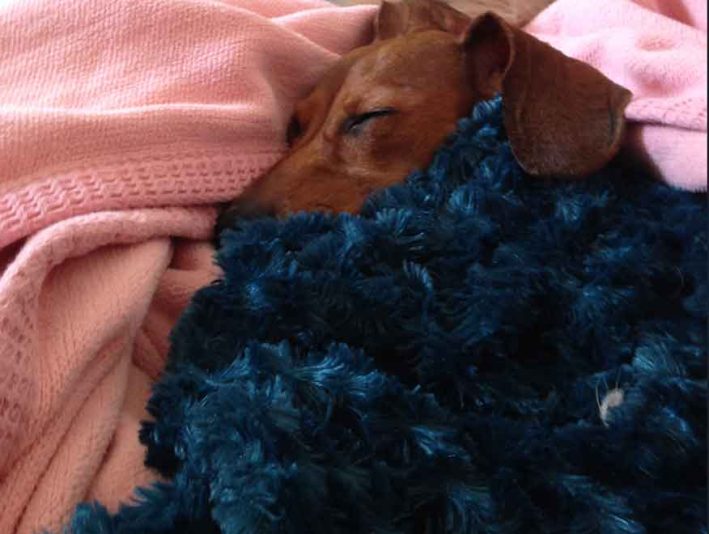
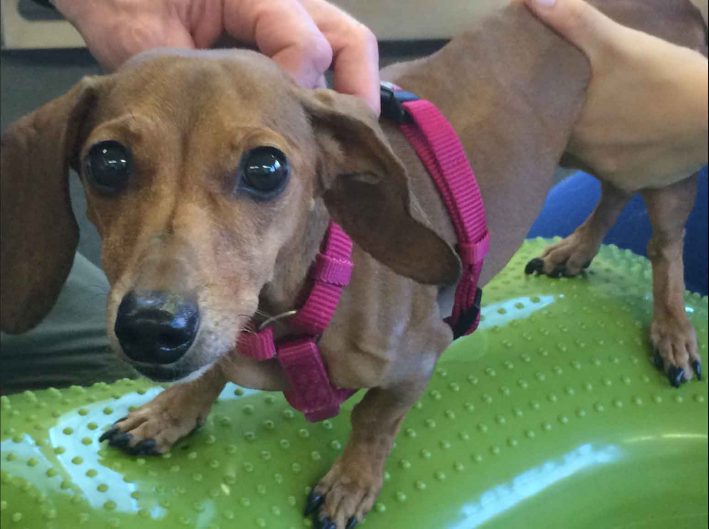
Ways to care for your pets that keep you both feeling good:
Feed your pets natural foods
Animals are as sensitive as humans to the unnatural additives, colorings, and preservatives that are used in many brands of commercial pet food. They may be allergic to some of these harmful chemicals, which could lead to behavior problems, excess weight gain, or dental issues. Holistic vets recommend natural diets, like raw foods, for cats and dogs.
Give your pets pure water
If your pets are not drinking enough pure water, it will affect both their health and their energy field. The smell or taste of tap water may not be appealing to them, so try filtered water or still (non-bubbly) mineral water. Beef broth or other meat broths, which you can cool down for them, are another way to get your pets to drink more.
Let the sun shine on your pets
Pets need sunshine for health as much as we do. They need to go outside for at least an hour a day to prevent depression, lethargy, and illness. Full-spectrum lighting has been used to prolong the lives of hamsters with heart disease. Keep both you and your pet healthy by going outdoors in the sunshine for a walk. If you have indoor pets, make sure they can access a place in the sun by a window.
Be a friend to your pets
Just like us, pets need companionship. Animals get lonely, so they love being around people and sometimes even other pets. I actually got a mini—a small horse—to keep my big horse, Influence, company when his pet goat passed on. Some pets, such as rabbits, gerbils, birds, fish, guinea pigs, and even rats, do best in same-sex pairs. Hamsters, on the other hand, are happiest by themselves in their own little world. Some pets, like llamas, will really become despondent if they don’t have the companionship of another llama; you’ll want to be informed about their needs before you choose an exotic pet.
Give your pet(s) space
All pets need lots of room to move around easily. We cannot imprison our pets in cages, pens, or runs that are too small. However, some dogs feel safest in a “den,” like a crate or kennel for sleeping. Listen to your animal’s needs and act accordingly.

 Learn more about energy healing for pets
Learn more about energy healing for pets
Pets have always been an important part of my life and I have experienced their amazing healing capabilities firsthand. So, when I started working with Simon & Schuster on my latest book, Heal Yourself—Heal the World, I planned for an entire section of it to be dedicated to energy healing for pets.
As an energy healer (and animal lover), I’ve spent many years studying and practicing a variety of mindfulness methods and healing techniques specifically for animals. This helped me to be there when any of my own loving animal companions were in pain and in need of my healing hands. In Heal Yourself—Heal the World, I share these methods with you so you can be equipped for any animal that might live with you (or come through the doors of your new practice as an energy healer).

You may also like:
Pets or Partners?
Do we choose the animals in our lives, or is it the other way around?
A friend of mine once had a cat show up outside her door on the same day she found out she had breast cancer. She hadn’t been looking for a cat, but he moved right into the house as her companion and became her new best friend.
You hear the same thing all the time from dog and cat owners who will tell you they weren’t looking for a pet, but were simply “adopted by” an animal and couldn’t let them go.
I was actually looking for a horse when I first met Influence, my Dutch Warmblood. For more than a year, I had been riding stable horses, but wanted a horse of my own to love. As I tried to narrow the list, I sent my Vedic astrologer three horse names from every weekend search. Unfortunately, he rejected them all, telling me to be patient, my horse was out there.
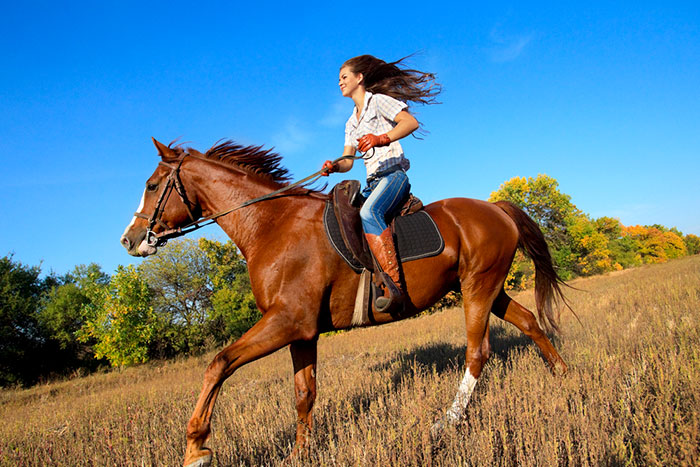
Just when it seemed like I would never have a horse of my own, I met Influence at a horse show. He was huge – 1,600 pounds – and black with a white blaze on his forehead and four matching white socks. As I watched him being unloaded from the trailer, I could tell instantly how calm he was, even while many of his counterparts jumped out and were difficult to control. To my surprise, the owner told me this show was his first time away from the farm, and that he’d never been saddled.
As Influence and I looked at each other across the stall railing, I could only describe myself as smitten. He must’ve felt the same, because I heard him ask me very clearly in my mind to take him home. Even my astrologer agreed, telling me “this is the one you’ve been waiting for,” but warned me not to bring him home right away since he was at risk for an injury in the next few weeks.
Like a lot of us, I ask for advice I don’t necessarily follow, so it’s probably no surprise that I brought Influence back to our ranch, in the wilds of the Sierra Nevada Mountains near Lake Tahoe, right away.
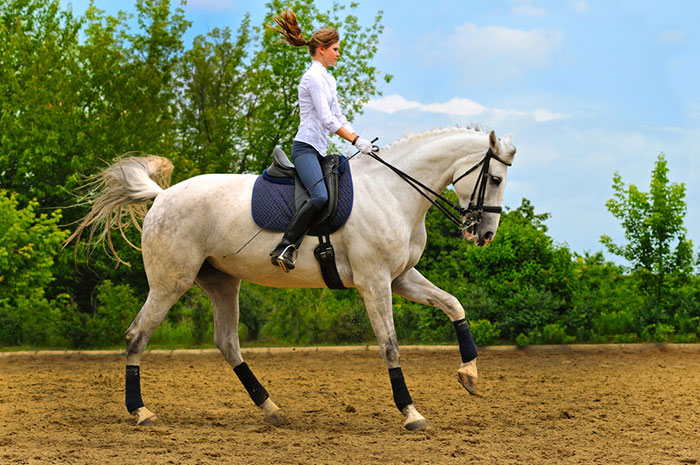
Sure enough, three days after I brought him home, I peered out the window and saw him looking frightened. Influence was holding up his front leg and blood was spurting out – the sure sign of a serious injury. My vet warned me that he’d probably never be “sound” again, but I took him to a clinic anyway.
That turned out to be a good thing, because not only did it save my horse, but he went on to recover fully. In fact, just a year later I took him to a breeding show and he won the top award for the finest conformation in North America. “Don’t let that go to your head,” I cautioned him. “Pretty is as pretty does!”
Together, Influence and I were a green horse with a green rider… absolutely the worst combination there is, according to the experts. When I look back now, it occurs to me that I never actually became Influence’s master. Instead, we were like classmates together. We were best friends.
I took Influence everywhere with me: to the doctor, the dentist, the supermarket. Whenever I would return to my truck, he would be there, patiently waiting for me. He became the child I never had. After a peacock suddenly flew out of the trees one day as we rode by and he reared, unceremoniously dumping me on the ground, I wanted him to be “spook proof” so I could fulfill the old adage of always keeping the horse between me and the ground. To that end, I got him nearly every animal on the planet and we raised them together: our dearly beloved pig, a billy goat who chased us around the ring while we rode, Bessie, the black and white milk cow that I bottle raised from infancy, chickens, ducks, a dozen llamas, and a pond of fish. Despite his size, Influence was very gentle and loving with the other creatures.
All of our vacations for the next 25 years centered around where Influence wanted to go: one summer we trained with Jane Fonda at her ranch in Montana, another at a Healing Touch workshop on the Pacific Coast, and countless trips centered on horse shows around the country where we got to play dress-up together.
His stall had a sliding door that faced into my office so even when I was working, we were together. If he got sick, I slept in a hammock in his stall. What can I say? These are the things you do for a good friend.
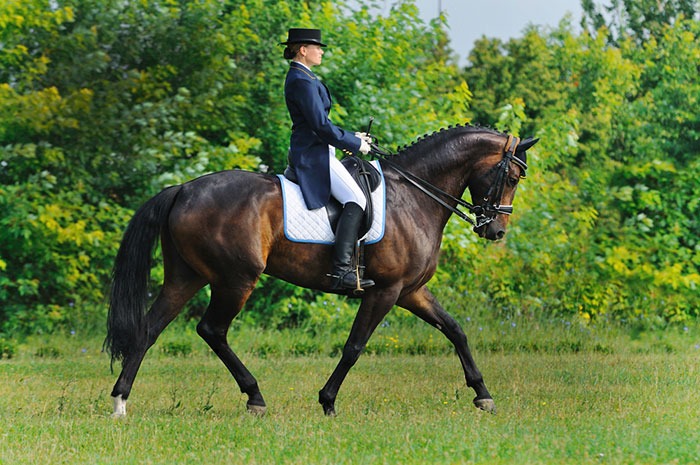
Influence taught me how to talk to the animals. I had only been riding him about a week when, one day, we found ourselves out in the desert for a short walk. I can still remember him saying to me – quite clearly – “It’s too hot out here and my feet hurt.” As if to reinforce the point, he gave me a cute look that said, That’s right, you heard me.
He’s also spoken up on other occasions. For instance, he used to complain how it wasn’t fair that the dog got to come inside and he didn’t, saying, “I’d be perfectly happy sitting on the couch and eating popcorn, too.”
The first time he ever saw me ride another horse, he got so upset, he turned his big behind to me, and refused to speak to me for the rest of the day. Animals have feelings too!
Perhaps the most important lesson I’ve learned from my horse, though, was when I figured out he was staying with me because he wanted to, not because he was fenced in. One day, as I was walking another horse around and feeding him carrots, Influence jumped his fence and cantered over to us with no effort at all, flouncing his tail and prancing in circles around us. He made it clear that he was angry when I fed treats to another horse and not him. Apparently you can be a good Influence and still have a bit of jealousy now and then.
At the same time, he made the instant point that he could leave anytime he wanted to. That actually made me feel better about our friendship than anything else.
Over the years, I have learned so much from Influence. He showed me how to move as one with him in performing the difficult movements of dressage, and then on a deeper level, took me down a path of studying the energetics of animals and learning to communicate with them telepathically. Best of all, he taught me about the unconditional love that can exist in the natural world when we’re open to receiving it.
I’m so thankful to Influence for choosing me.
Who Rescued Who?
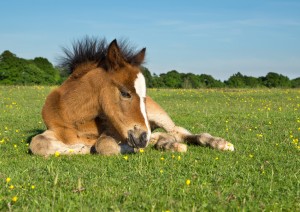
Until one has loved an animal a part of one’s soul remains unawakened. ~Anatole France
There are so many benefits to having a pet that it’s hard to count them all! Pets provide us with unconditional love, motivate us to play and exercise, and keep depression and loneliness at bay. People with pets live longer, spend less time at the doctor’s office, and are happier overall, and it’s certainly not a one way street – our pets benefit from the arrangement, too! The other day, I saw a bumper sticker on a car that made this point perfectly. Inside a big paw print were the words “who rescued who?”
That bumper sticker made me think of Ida, a neighbor I had years ago. When I met her, she was in her mid-nineties. Her independent and cheerful spirit immediately struck me – she was entirely self-sufficient, and lived alone with only her ancient Pomeranian, Princess, for company. Princess gave Ida an excuse to get out and interact with the world several times a day. Everyone in the neighborhood was used to seeing the little grey-haired woman and her tiny, teetering dog making their way along the street. These walks kept them both active, healthy, and in touch with their neighbors, who kept an eye out every day to make sure that Ida and Princess made their scheduled rounds. The two friends carried on for years, living in their little house, until, as if they had agreed that it was time, Princess passed away, and a few days later, Ida, at 98, followed. The two were so devoted to each other, I could never figure out who was taking care of whom!
As a spiritual teacher, I know that one of the most powerful forces in the universe is unconditional love. If you provide your pets with food, shelter, affection, and medical care, they will pay you back by supplying you with unconditional love and a sense of purpose, both of which are crucial for anyone, especially those who are out of work, living alone, or just feeling down in the dumps. Pets combat feelings of loneliness by providing companionship, which can boost your overall mood and bring you feelings of joy and happiness. At my healing courses, I can always tell which attendees have a pet and which do not. Your apartment doesn’t allow an animal? Then try an aquarium; fish are pets too!
Or course, the elderly aren’t the only ones who benefit from having pets. In fact, pet ownership is great practice for any serious, committed relationship. Here are some important relationship skills that you probably already use on your pets. Try some of these and I guarantee that you, your pet, and your “human” relationships will benefit!
Unconditional love starts with a warm greeting! Even on bad days, we greet our pets with a warm hello, a pat on the head, or a hug. Of course it helps that they are always so happy to see us! This is a terrific example of the fact that “you get what you give.” Your pet gives you something very positive that reinforces the love and connection that they get back from you. Do you greet your significant other with the same enthusiasm after a long day at work?
Tune in and develop your listening skills. You can practice this basic energy healing technique to sense what your pet has to say. They will always tell you what their problem is if you just tune in and listen. When you’re sitting quietly with your pet, with no TV or computer on, simply intend to open to whatever your pet wants to tell you. Touch your pet gently, and you may “hear” or “know” what your dog or cat has to say. Now put these same intuitive skills to work when dealing with the people in your life!
Practice the art of forgiveness. When our pets make mistakes, we don’t take it personally and are quick to forgive. It’s easy to give pets the benefit of the doubt when they look at us with their big, soulful eyes! Remember that feeling when your partner does something wrong, and pause for a moment before you react with anger and blame!
Having a pet is a beautiful way to share the light of unconditional love with your pet and everyone else in your life. If you are ready to open your heart, live a happier and healthier life, and hone your relationship skills so you can be a better friend, parent, or spouse . . . get a pet!
If Our Pets Could Talk
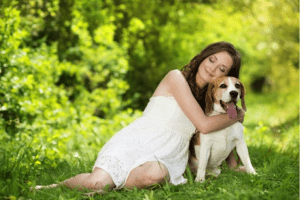
We love our pets. And sometimes we swear we know what they are thinking. But one place communication can be more difficult is when a pet dies. It’s really hard on us, and especially hard for a child to lose his or her “best friend.”
I recently read a wonderful true story that I’d like to share with you. 4-year-old Meredith Scrivener wrote a letter to God (with her mom’s help, of course), about the loss of her 14-year-old dog, named Abbey . . . and got a reply.
Meredith was crying and talking about how much she missed Abbey, so she wanted to write a letter to God “so that when Abbey got to heaven, God would recognize her.” This is the letter she dictated:
Dear God,
Will you please take care of my dog? Abbey died yesterday and is with you in heaven.
I miss her very much. I ‘m happy that you let me have her as my dog even though she got sick.
I hope you will play with her. She likes to swim and play with balls.
I am sending a picture of her so when you see her you will know that she is my dog.
I really miss her.
Love, Meredith
The letter included a picture of Abbey & Meredith, and addressed to God/Heaven. A return address was put on, along with a lot of stamps “to get the letter all the way to heaven.”
A short while later, a mysterious package wrapped in gold paper arrived, addressed ‘To Meredith” in an unfamiliar hand. In the package was a book called When a Pet Dies. And this following letter was taped to the inside cover of the book:
Dear Meredith,
Abbey arrived safely in heaven. Having the picture was a big help and I recognized her right away.
Abbey isn’t sick anymore. Her spirit is here with me just like it stays in your heart. Abbey loved being your dog.
Since we don’t need our bodies in heaven, I don’t have any pockets to keep your picture in so I’m sending it back to you in this little book for you to keep and have something to remember Abbey by.
Thank you for the beautiful letter and thank your mother for helping you write it and sending it to me.
What a wonderful mother you have. I picked her especially for you.
I send my blessings every day and remember that I love you very much.
By the way, I’m easy to find. I am wherever there is love.
Love,
God
There are so many heartwarming stories related to our pets. I’ve read about a cat that traveled hundreds of miles to find its way back home, and about dogs who have rescued their owners, waking them at night when there was a fire in the house. There are stories about lions, gorillas, whales, dolphins, and even a pig saving people.
But sometimes we wonder what our pets are thinking. Why is Ginger the cat or Emma the dog acting that way? Why have they gotten sick? What do they like/dislike? What information do they have for us? I know from the many animals I’ve lived with over the years—cats, dogs, horses, llamas, chickens, ducks, and geese, just to name a few—that they have their own wisdom that they are willing to share with us.
Certain people have the gift of being able to communicate with animals and to read the subtle clues they present. They can coax animals into opening up and revealing their emotional and/or physical problems. Think of the questions you would ask someone who could hear your animal’s thoughts. Would you ask what they were thinking or feeling? Or why they’re behaving the way they are? Or maybe you would ask how are they doing since they transitioned to the other side?
If you have questions about your pet, just call the show and let’s talk!!
Energy Healing for Your Pets
We love our furry friends dearly, but do we always do what’s best for them? And as someone who believes in energy work, do you use holistic principles in caring for your pets?
There are, of course, traditional standards of care for your pets that should be part of an integrated approach to your pet’s health, such as:
- Make your home a safe environment—keep pesticides, antifreeze, medicines, cleaning products out of reach; get rid of house plants that pose a serious danger (dieffenbachia, philodendron, hyacinth, and mistletoe), as well as outdoor shrubs/flowers like oleanders, tulips, lilies, and rhododendrons; be aware of low electrical cords if your pet is likely to chew them; and watch for small objects that can cause choking.
- Yearly check-ups by a good vet for preventative vaccinations, dental care, and early detection of problems.
- Get enough exercise—fat dogs and cats are not healthy. Get off the couch and play with your indoor cat. Exercise with your dog, good for both of you. (There are even dance classes for dogs!)
- Avoid feeding toxic foods to your pets, such as chocolate, grapes, avocados, and Macadamia nuts; anything moldy or rancid; food that comes from cans with plastic linings.
Diet is one of the factors that has changed the most in the last 50 years, during which time the health of dogs has declined, a lot. Dogs will eat whatever is available, and their digestive system can deal with anything from rotting meat to earthworms. They can even be vegetarian, unlike cats, who are true carnivores. In the past, dogs were fed table scraps (and the food itself was healthier back before GMOs, heavy pesticide use, and depleted soils). Commercial pet food comes from the cheapest sources, with little nutrition, and is loaded with pesticides. Just like us humans, pets need good food to stay healthy. If you can’t make your pet’s food yourself from high-quality human food, be sure you’re using one of the better commercial brands.
How about using color therapy to treat a sick pet? It really works, and doesn’t have to involve expensive equipment. You can put water in colored glass jars and place them in the sun. For a dog with arthritis, for example, you would use a red glass container and, after it has sat in the sun, apply it as a spray or wash to your dog. Or you could have Fido lie on a red towel.
There’s a vet in Ohio who has treated over a hundred dogs with color for skin, digestive, emotional, and respiratory problems, with great success! She says that “when cooling blues are applied to hot spots or other inflamed skin conditions, there is an instant calming and skin color change from red and irritated to more normal, which starts the healing process.”
Or how about massage, acupuncture and/or chiropractic for your pets? I admit to using all three for my horse, Influence. And just like humans respond to kinesiology (muscle testing) as a way to determine what is happening in the body, so do pets. Then gentle massage that you do yourself can correct imbalances and speed healing. It’s a great support therapy that can be used in conjunction with veterinary care.
You can also take the principles of energy healing that you have learned from the Deborah King Center and use them for your pets to help keep their energy in balance and to feel better physically and emotionally. Deborah teaches you how in her course Energy Healing for Pets and Animals.
But most of all, love your pet and enjoy their unconditional love of you!
Working with Animals to Expand Your Gifts
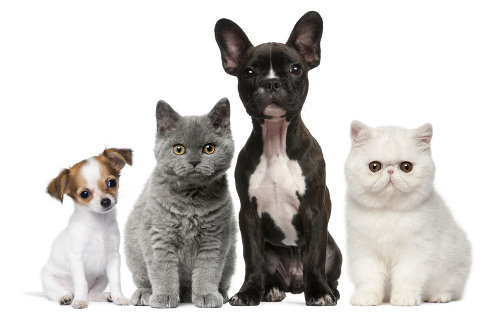
Working in a healing capacity with animals can be a wonderful way to get started expanding your gifts. A Facebook friend, Natalie, told me that the day her beloved dog died, a small, skinny cat walked up the street and came directly to her and her children, as if he knew they needed him. She said the name “George” popped into her head. That night, as the family members were still crying about the sudden death of their dear dog, George purred loudly and rubbed Natalie’s face, clearly telling her that it would be okay. Their new pet made it so much easier for everyone to adjust to the loss of their old one. Animals always know what we need and how to help us – the least we can do is try to heal them when they need our assistance.
I’ve always had lots of pets. When I was a child we had Goldie, a cocker spaniel; a boxer named Teddy; and a whole series of cats. When I went off to college, I even tried to take my beagle puppy with me, but the dorm supervisor made me turn around and drive it back home. What was I thinking?! After I got married, I also had dogs. For example, there was Dolly, our black Lab who would squeeze herself into the smallest space in the car so she fit in with all of the climbing and camping gear. She would then reinflate herself when we reached the campground. And I always had cats, as many as eight at one time.
When I finally accepted the fact that I wasn’t going to have children, I started to collect animals in earnest and lived close to them on a remote ranch in the Sierra Nevada Mountains. I began with llamas, which I bred. Llamas are amazing animals! They meditate every day, kneeling and facing the rising and setting sun. The mothers are so devoted to their young and do all of their training with gentle admonitions and little nips, never with anger or violence.
One day I was standing in a field, looking at a possible llama for purchase, when the owner’s horse suddenly galloped up. I was so startled by such a large animal that I quickly climbed a nearby fence for safety; I’d never actually seen a horse up close before! Afterward, I couldn’t get it out of my mind. A few days later, I asked a neighbor if I could ride hers, and the rest was history. I wound up taking a whole year off from my day job as an attorney to immerse myself in what I called “the university of the horse.” Today, I still have my very first horse, named Influence. He is a flashy, black Dutch warmblood, just like the horse in National Velvet. He now lives right outside my kitchen window in well-deserved retired bliss.
Thanks to Influence, I learned to talk to animals and heal them. It began one day after I’d had him for about a month. I was riding through the desert chaparral when I heard him say, “It’s too hot, and my back hurts.” I was so surprised that I almost fell off. I jumped down and looked him in the eye and could see him laughing. He has quite a sense of humor! From that day on, I started listening very carefully and discovered that you can actually hear animals communicate if you simply quiet your mind and use your intention. Those are the same steps I take when I’m getting ready to do healing work with people: I form an intention to listen to them very deeply, way below the level of speech.
I wanted Influence to be familiar with all kinds of animals so he would be less likely to spook. My goal was to avoid a situation where I could easily violate the cardinal rule of always keeping the horse between myself and the ground. That was a great excuse to start a collection: I acquired a dairy calf, a billy goat, chickens, ducks, and a pig, as well as peacocks and ostriches. While I was adjusting Influence to every creature, including the herd of llamas he lived with, I was getting a pretty good education in how to talk to them. I took classes in using healing touch on animals, which is actually quite a solid foundation for doing the same practice on humans, since animals (especially horses) are much more sensitive to touch than people are.
The first step is listening to hear what the animals have to say. They will always tell you what their problem is if you just tune in and listen.
~ From Be Your Own Shaman, by Deborah King

